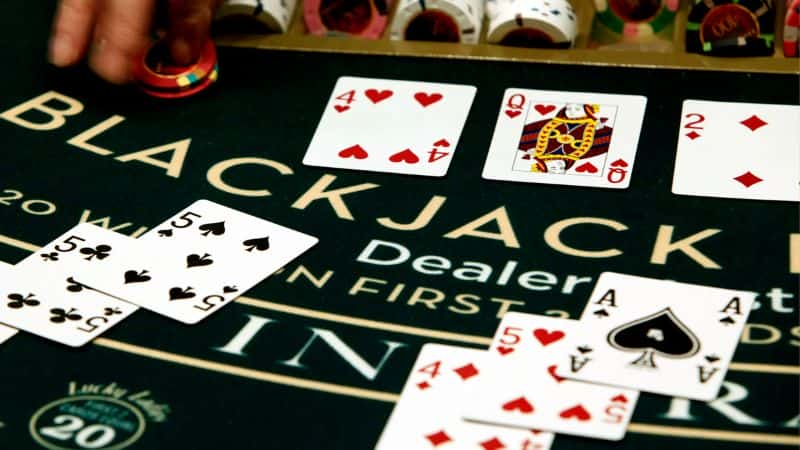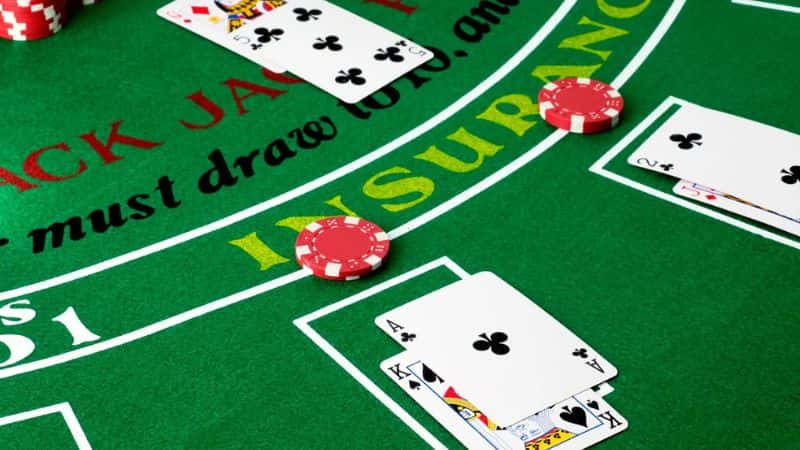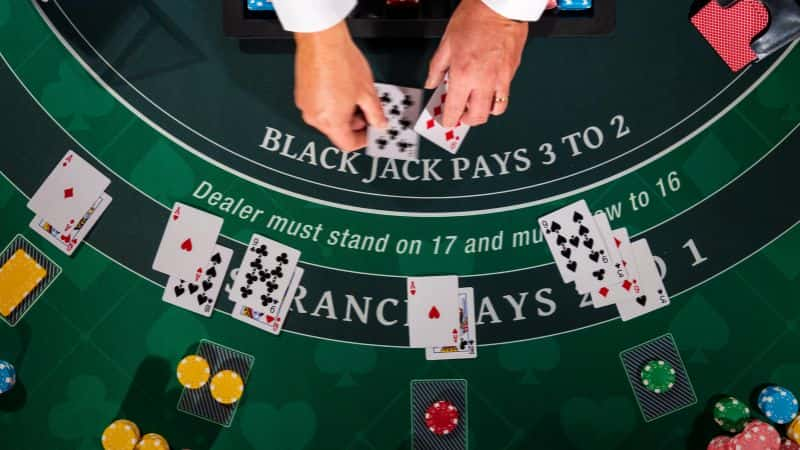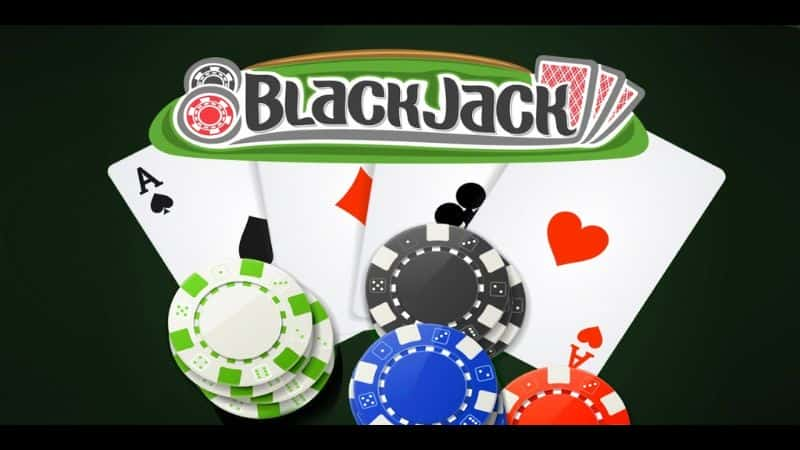Blackjack playing strategies help you make smarter moves and improve your chances at every table on Raja Luck. With the right tactics and discipline, players at Raja Luck can enjoy more consistent results and better long-term wins.
Learn the Basic Strategy First
Basic strategy is a guide based on math that tells you the best move in every Blackjack situation. It’s created by analyzing millions of possible hands and outcomes using probability and logic. This chart shows whether you should hit, stand, double, or split for each possible hand you receive.
Following the chart helps avoid emotional decisions and keeps your gameplay consistent and logical. New players should study the chart or keep it nearby while learning how to play Blackjack effectively.
With practice, players can remember common scenarios without checking the chart during every round. Using basic strategy can significantly improve long-term results and reduce unnecessary losses. It lowers the house edge by helping you make the most statistically correct choice each time.
This method works best in Blackjack games that follow standard rules with 3:2 payouts on natural hands. Avoid games with 6:5 payouts or unusual rules, as they reduce the strategy’s effectiveness. Even experienced players rely on basic strategy to stay consistent during long gaming sessions.

Many online platforms display the correct move as part of the interface for beginners to learn faster. Practicing in demo mode helps reinforce the strategy before playing with real money. Basic strategy is not a guarantee to win, but it gives you the best possible chance over time.
It’s an essential skill for anyone serious about improving their Blackjack performance and minimizing mistakes. At Raja Luck, several Blackjack tables support basic strategy play with favorable rules and standard payouts.
Learning the correct move for each hand becomes easier the more frequently you play with the chart. This foundation prepares players for more advanced strategies like card counting or bankroll management later. Start with basic strategy to build confidence, make smarter choices, and enjoy more consistent results at the table.
When to Hit, Stand, Double Down, or Split
Understanding when to hit, stand, double down, or split is essential for success in Blackjack. Each decision depends on your hand and the dealer’s card. Knowing the right move can lower the house edge and increase your odds.
Hit
Hit when your hand is weak and the total is below 12, especially if the dealer shows a high card like 10. If your total is 16 and the dealer has 9, 10, or Ace, hitting gives you a better chance to improve. Always hit on a soft 17, such as Ace and 6, unless the dealer shows a very low card. Soft hands allow flexibility since the Ace can count as 1 or 11, making hitting less risky.
Stand
Stand when your total is strong, such as 17 or more, especially if the dealer has 7 or higher. If the dealer shows a weak card like 4, 5, or 6, stand on totals as low as 12. Let the dealer risk going bust when they have a weak upcard and you have a medium hand. Standing on a hard 13 or more against a weak dealer card is often the best choice.

Double down
Double down when you hold a total of 10 or 11 and the dealer shows a lower card. This move lets you double your bet and receive only one extra card, ideal when odds are in your favor. Also double on soft 16 to 18 if the dealer shows 4 through 6, improving potential payout. Avoid doubling when the dealer has strong cards like 10 or Ace, as risk outweighs reward.
Split
Split pairs when both cards are the same value, but only in certain situations. Always split Aces and 8s, no matter what the dealer shows, to avoid weak hands like 16 or soft 12. Never split 5s or 10s, since these hands are already strong and better played as a single total. Split 2s, 3s, or 7s only if the dealer shows a weak card from 2 through 7.
Choose the Right Table Type
- Pick tables with 3:2 payouts and standard rules to increase winning chances and reduce the house edge.
- Low-limit tables suit beginners, while high-limit options offer bigger rewards for experienced, confident players.
- Live dealer tables provide real-time interaction, while virtual tables deliver faster gameplay without delays.
- Mobile-optimized tables ensure smooth performance, clear buttons, and easy navigation on phones or tablets.
- Consider side bets or multihand formats only if you’re familiar with the rules and ready for extra risk.
- Test different table types in demo mode before playing with real money to find the best fit for your style.
Avoid Insurance Bets
Insurance is a side wager offered when the dealer’s upcard is an Ace, creating the possibility of a Blackjack. The insurance bet pays 2:1 if the dealer actually has a ten-point card and completes a natural Blackjack hand.
To make this bet, you must place half your original wager, increasing your overall risk during the round. Although tempting, insurance rarely benefits players unless they have knowledge of remaining cards in the shoe.
Mathematically, insurance favors the house because the odds of the dealer holding Blackjack are less than one-third. In the long run, consistently taking insurance will reduce your winnings and increase the casino’s advantage over you.
Professional players often ignore insurance because it distracts from their primary hand and increases unnecessary decision-making. If you’re not counting cards, insurance becomes a guessing game with a negative expected value over time. Even when your own hand is strong, taking insurance won’t protect you from a total loss if you misjudge.

It’s better to focus on playing your hand correctly using basic strategy rather than adding risky side bets. Some players assume insurance is a safety move, but it’s actually an independent bet with separate odds and payout. This misconception leads beginners to waste chips on a wager that statistically offers little return.
Blackjack at Raja Luck, insurance remains optional, giving players the freedom to skip it without affecting the main game. New players should avoid insurance until they fully understand Blackjack probabilities and betting strategy. Sticking to the main bet and playing smart will produce better long-term results than chasing small side wins.
Unless you’re an advanced player with card-counting skills, insurance adds risk without providing consistent rewards. Blackjack tables include clear prompts for insurance, but you’re never required to accept the offer. Make each decision based on logic and odds, not emotion or the fear of losing to a dealer Blackjack.
Mastering strategies at Raja Luck turns Blackjack into a game of skill, not just luck or instinct. Practice regularly, apply proven methods, and enjoy every hand with more confidence and control at Raja Luck.

